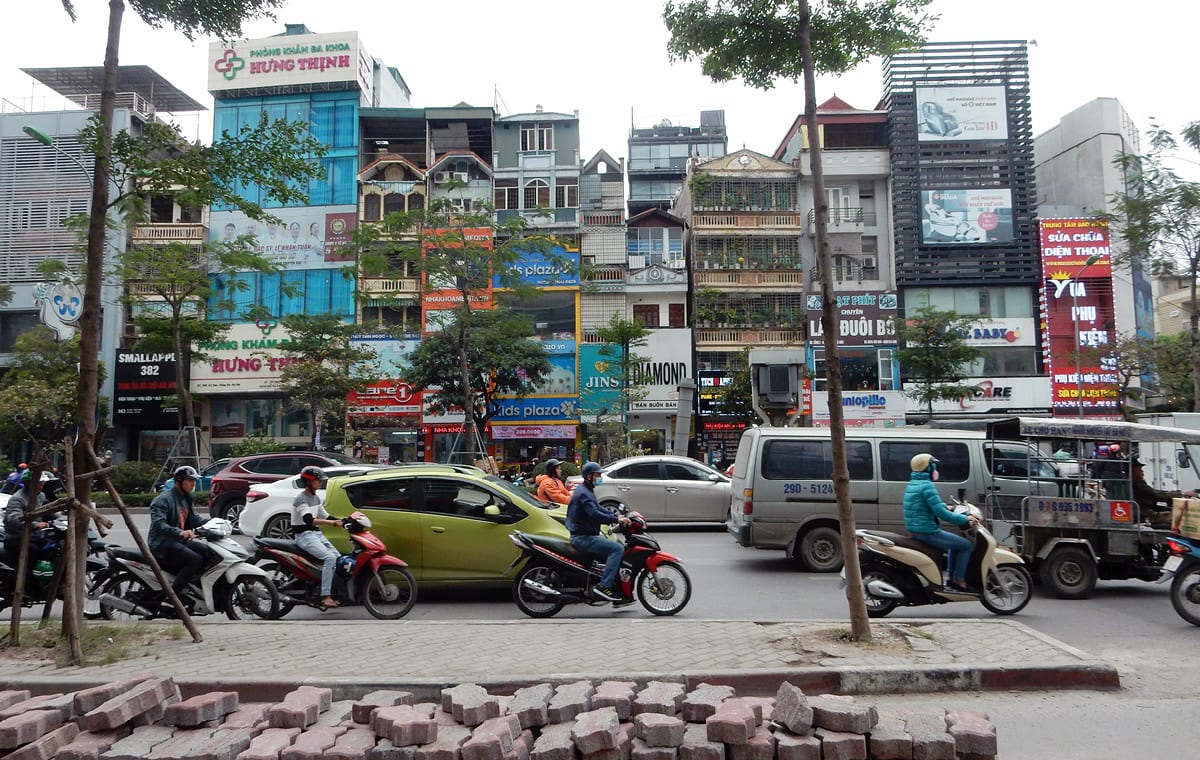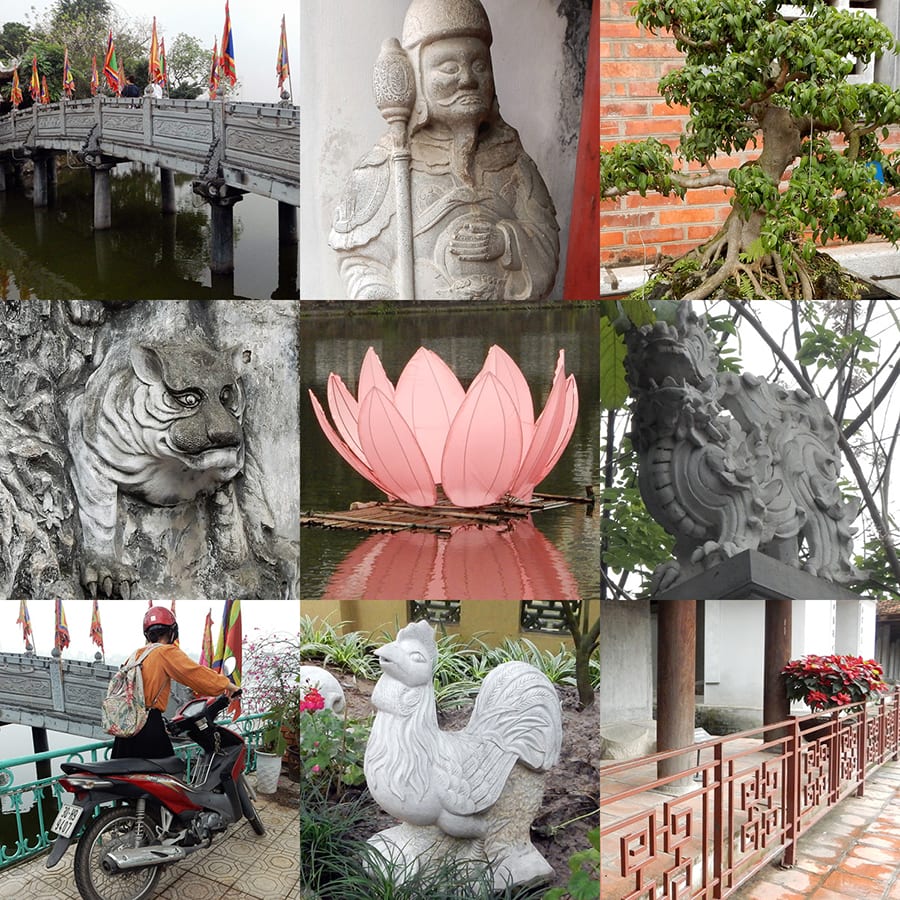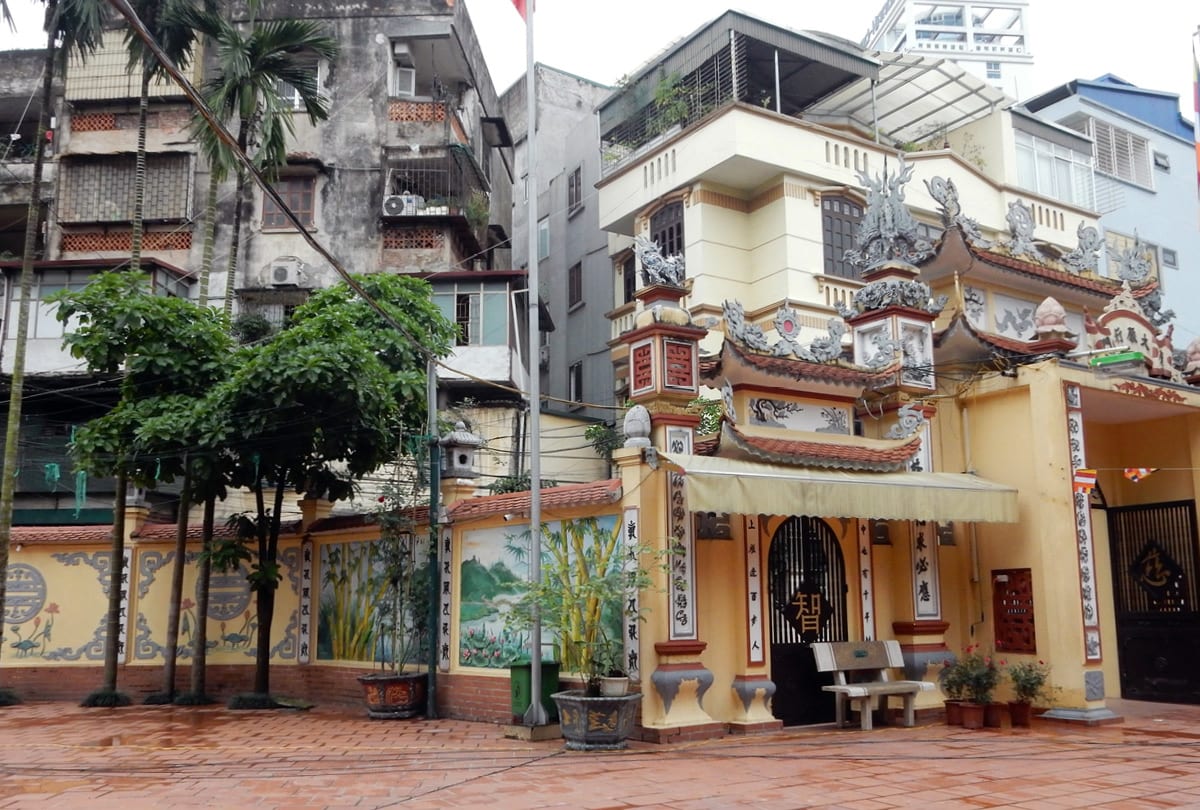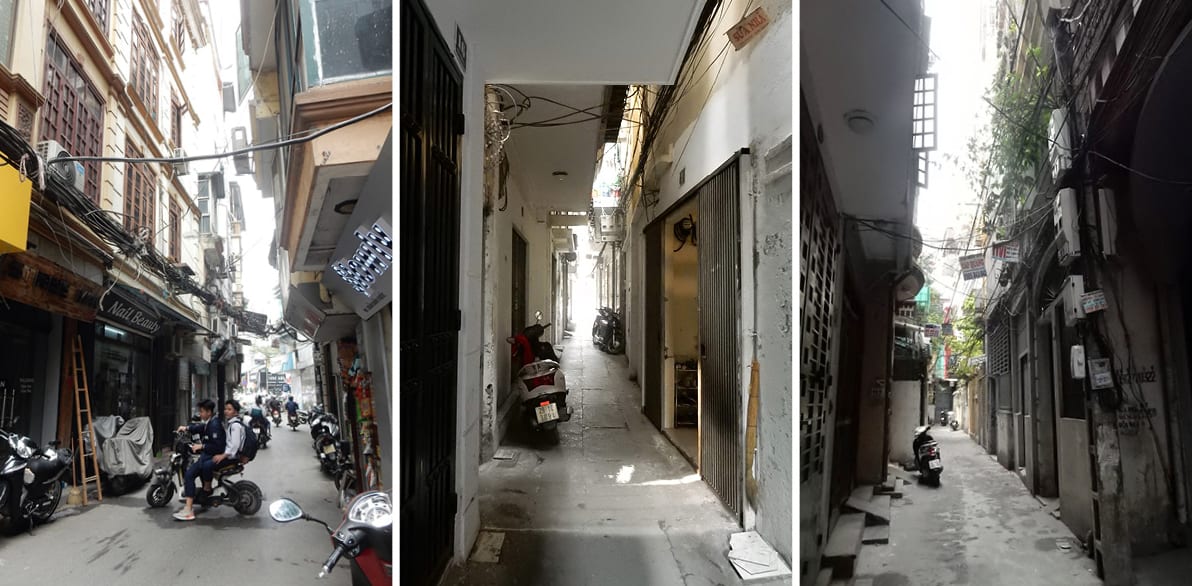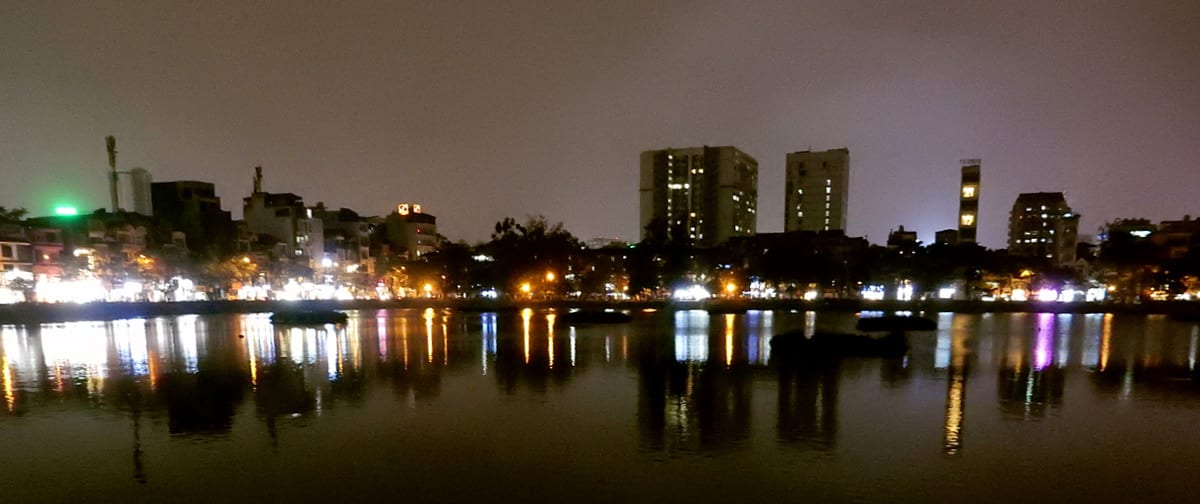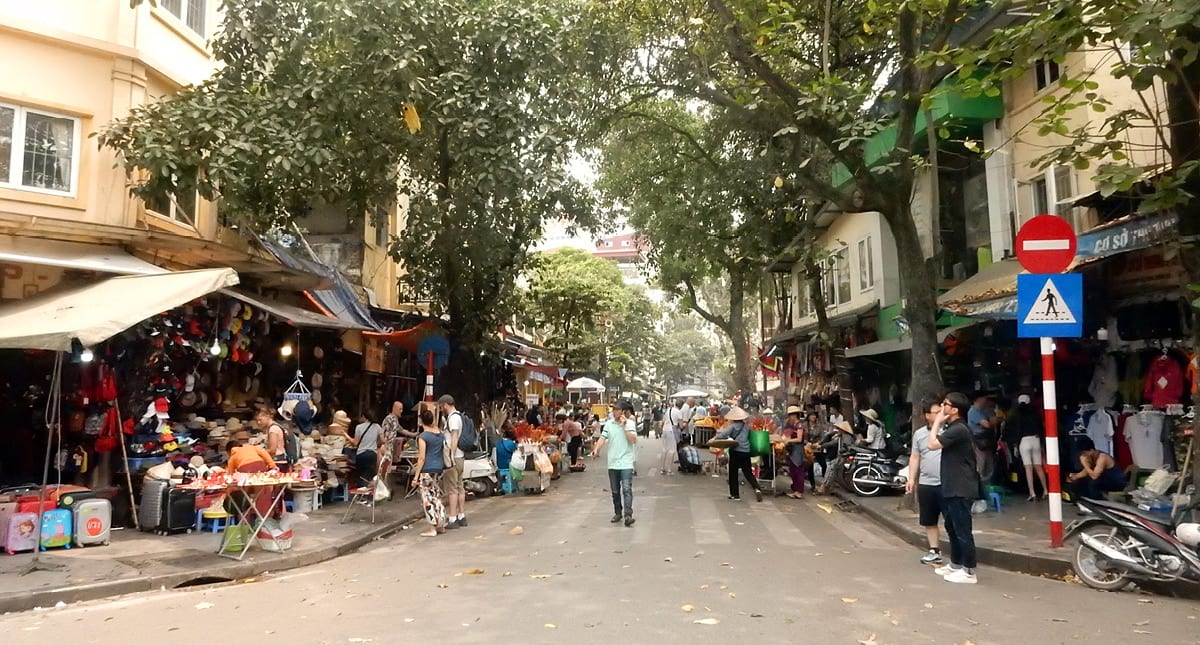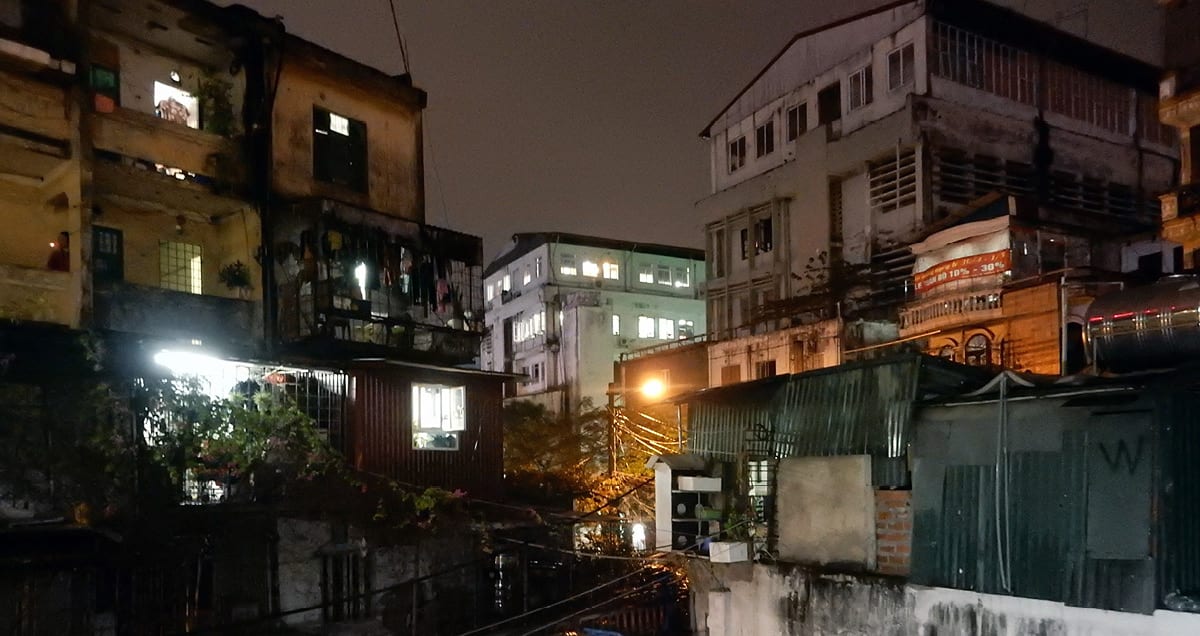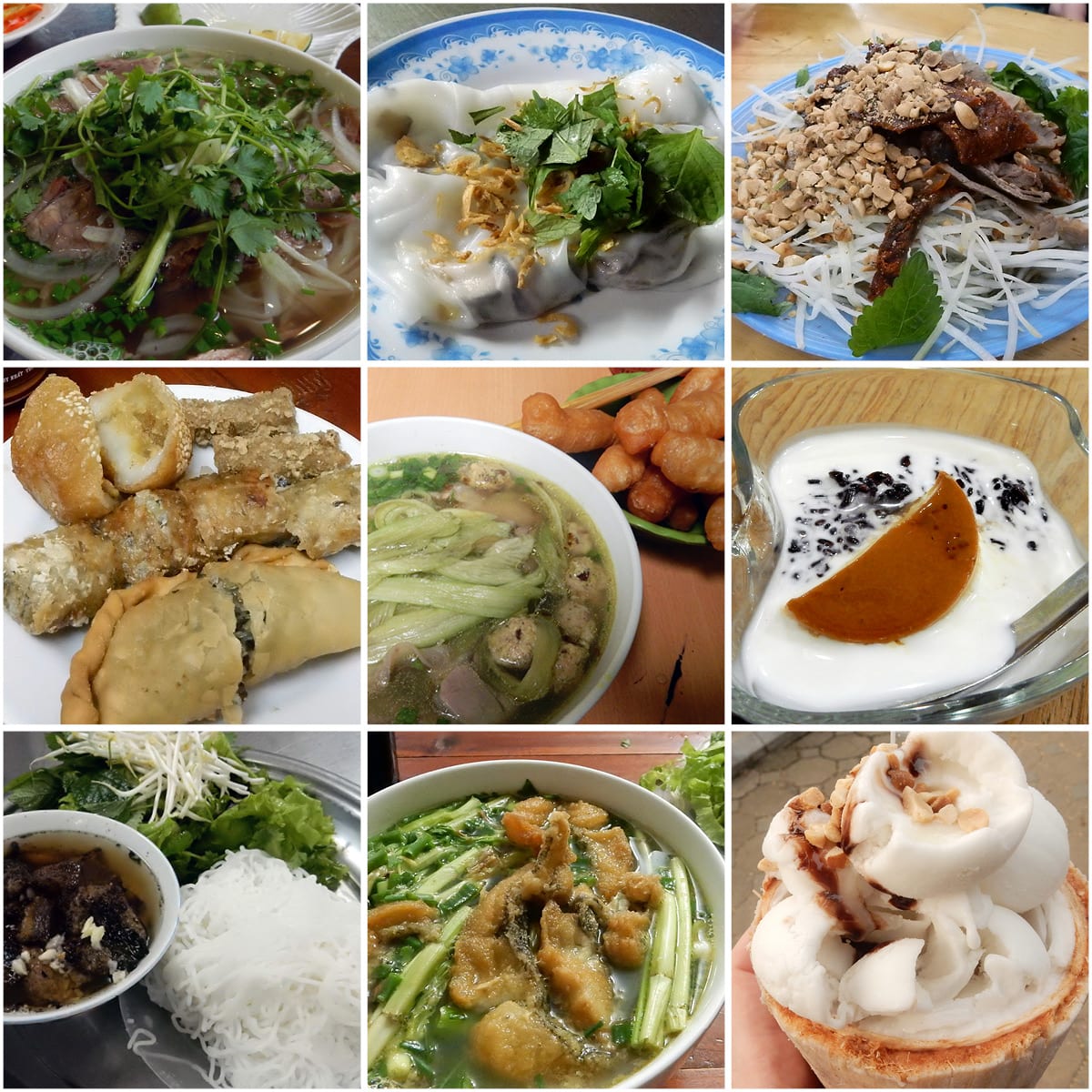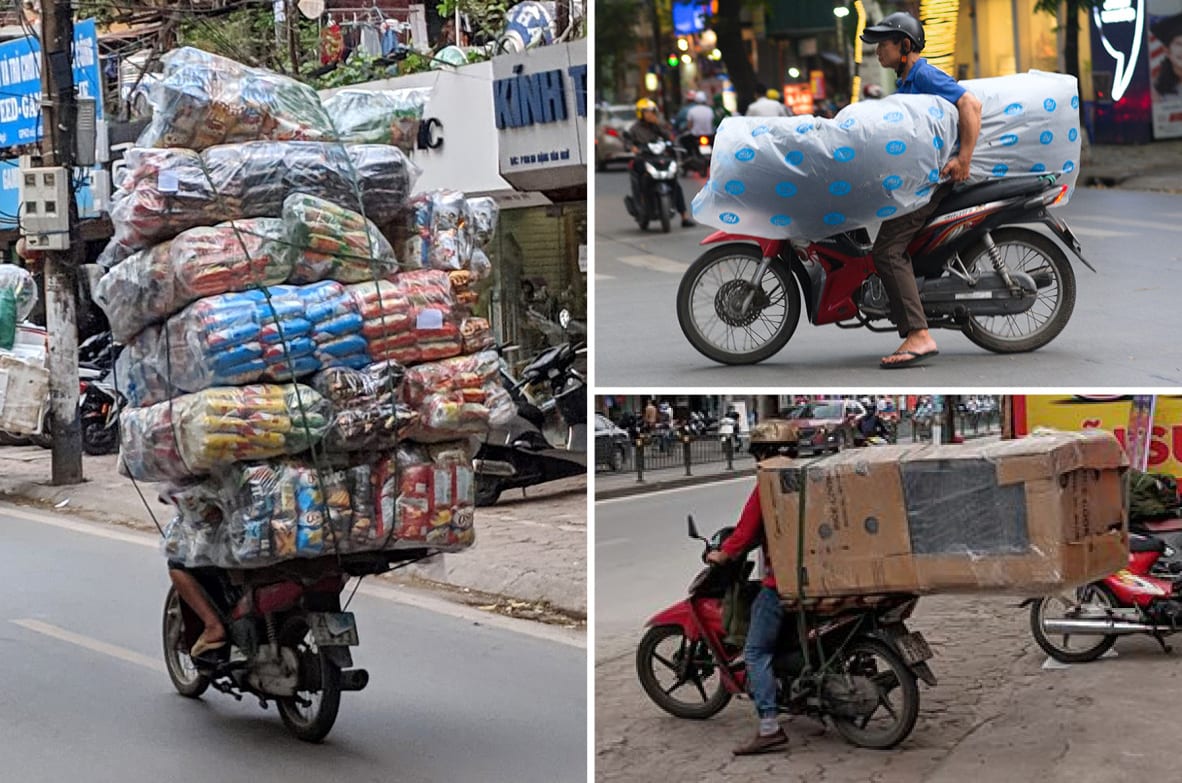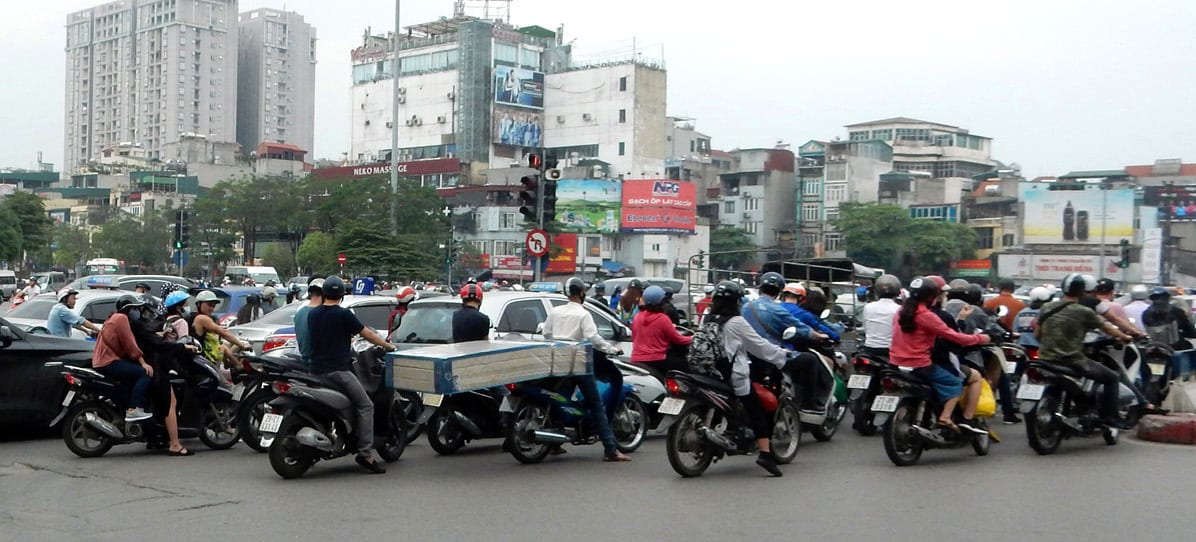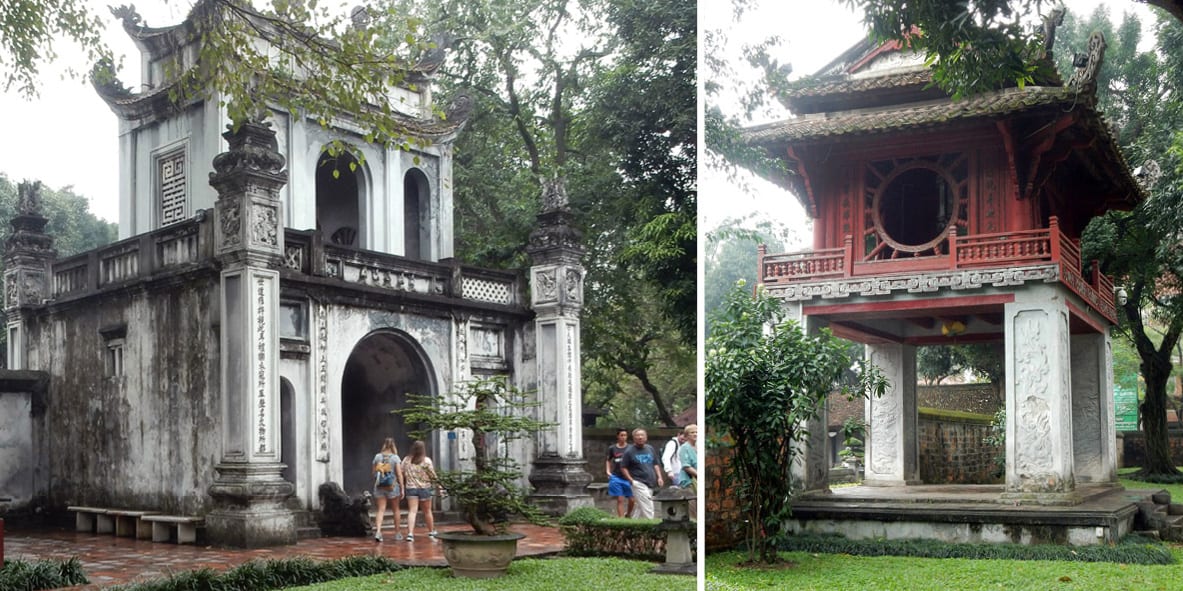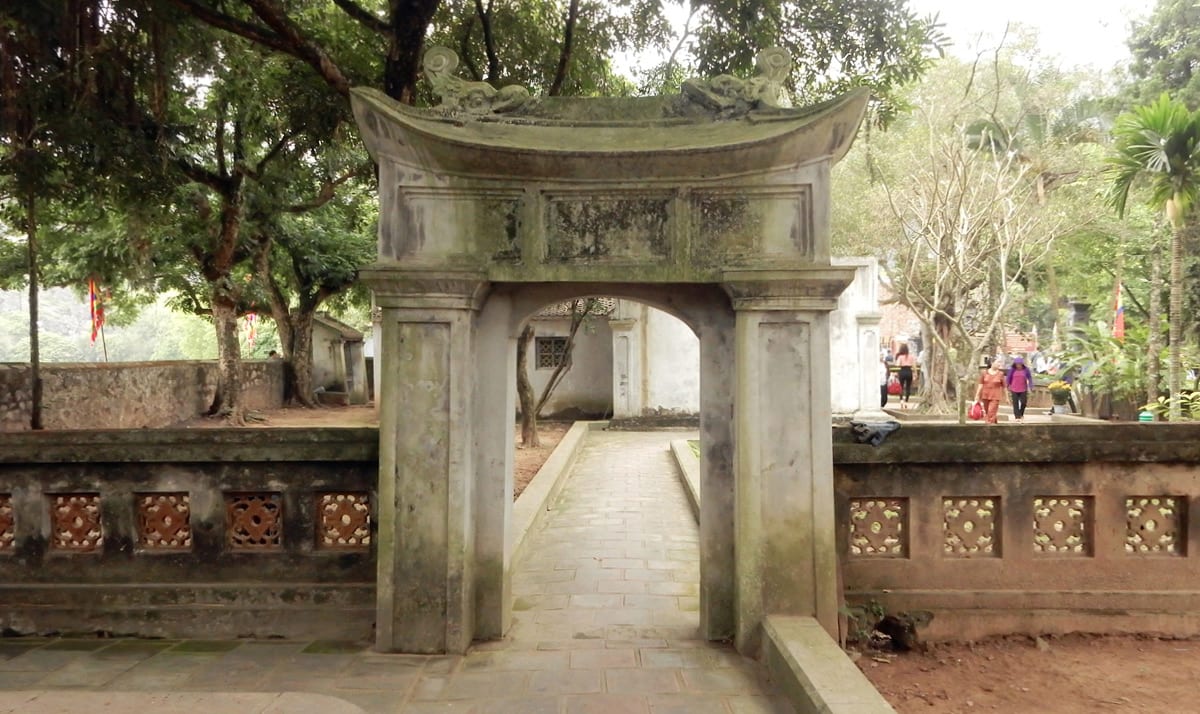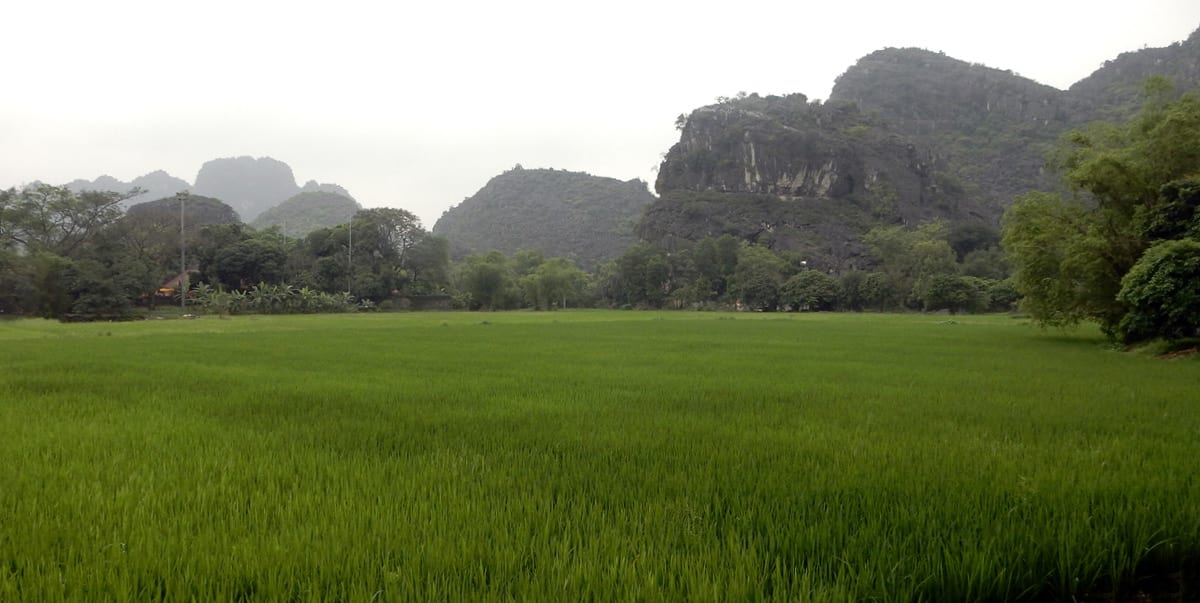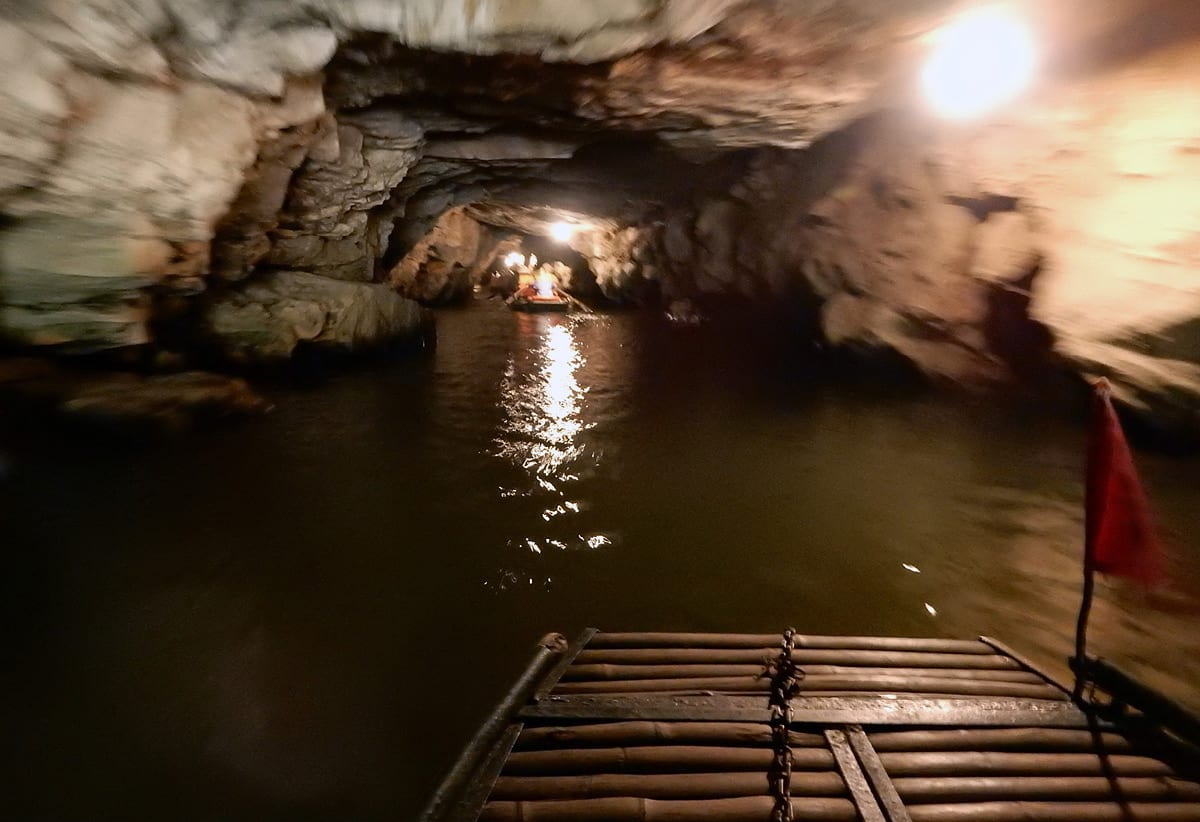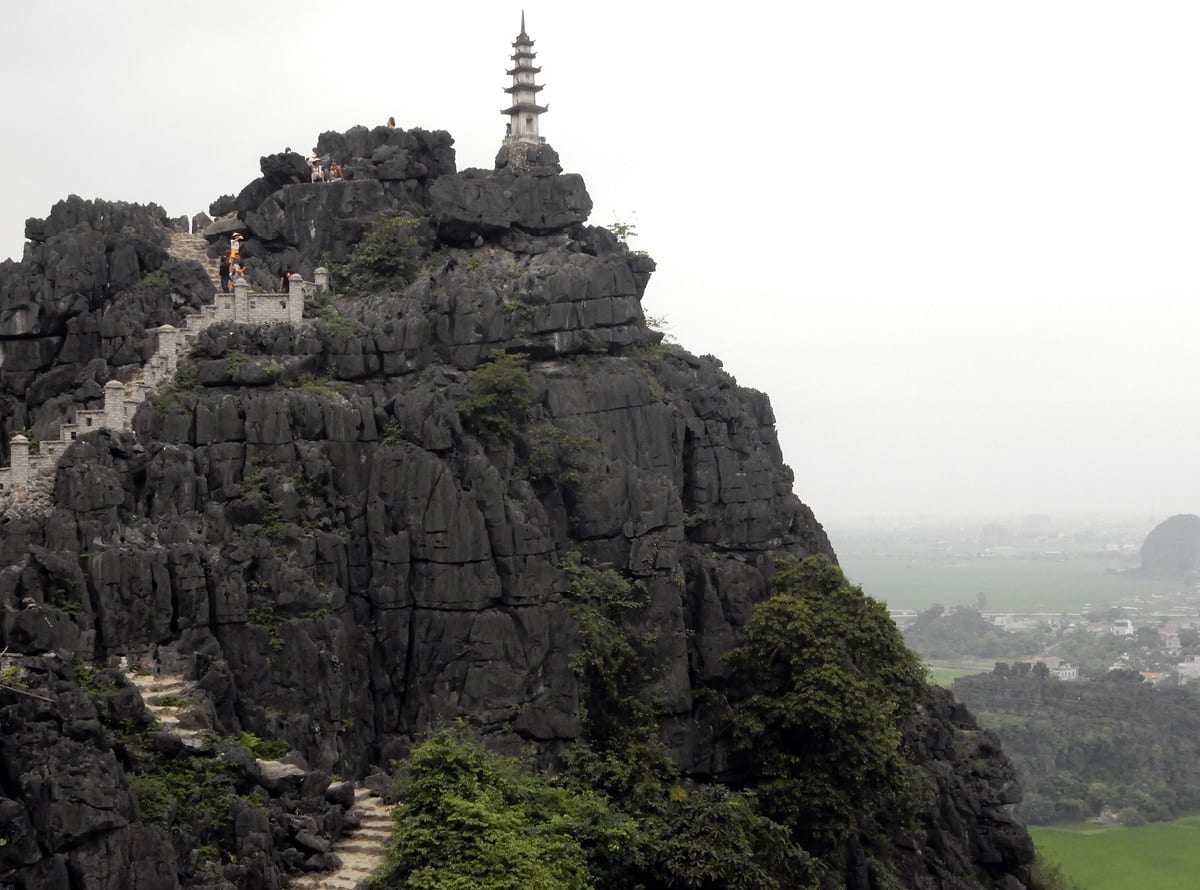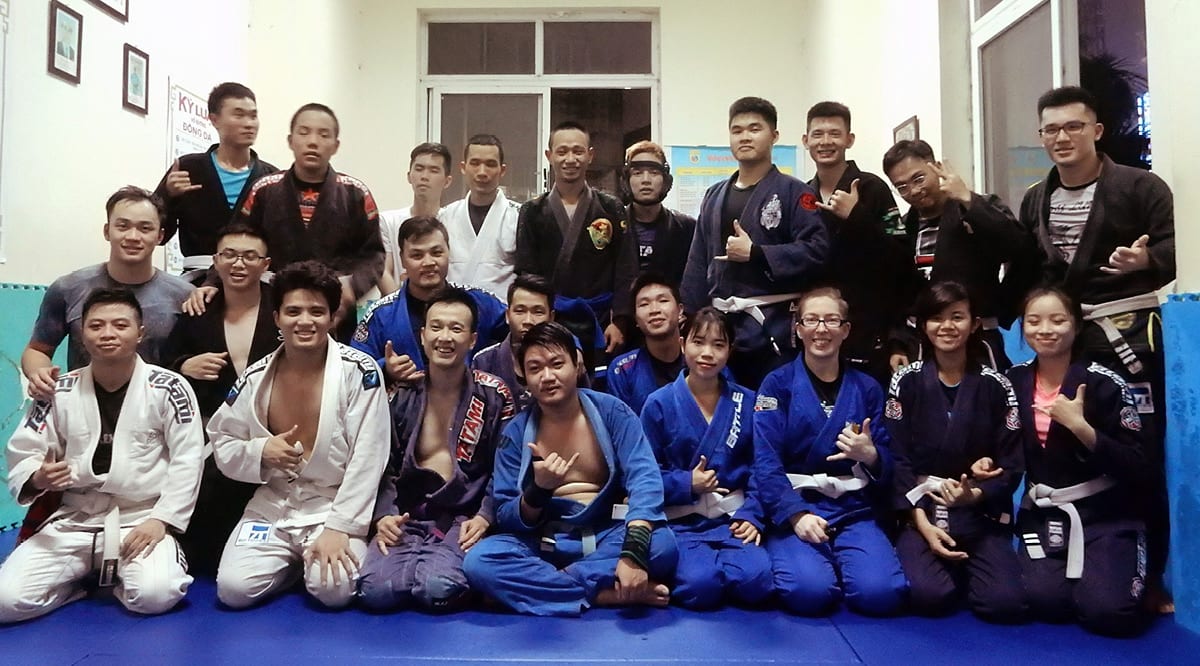Traveling & Training in Hanoi, Vietnam
Reasons to go: extremely affordable, unique city, amazing food, very safe for solo female travelers, lively ambiance, beautiful temples.
Of all the countries I’ve traveled to (over 20 in the last 3 years!), Vietnam is the first that has felt like a truly foreign experience. I stayed in Hanoi almost a full month and my first couple days in Hanoi were, in all honesty, a little overwhelming. The city is huge, very crowded with people and dense narrow buildings, constantly noisy, with the most insane traffic I’ve ever seen and much less English spoken than any country I’d previously been to. By the end of the stay, however, I’d grown quite acclimated and comfortable with all of this, and had grown to love a lot of the city’s unique charm.
A Growing City
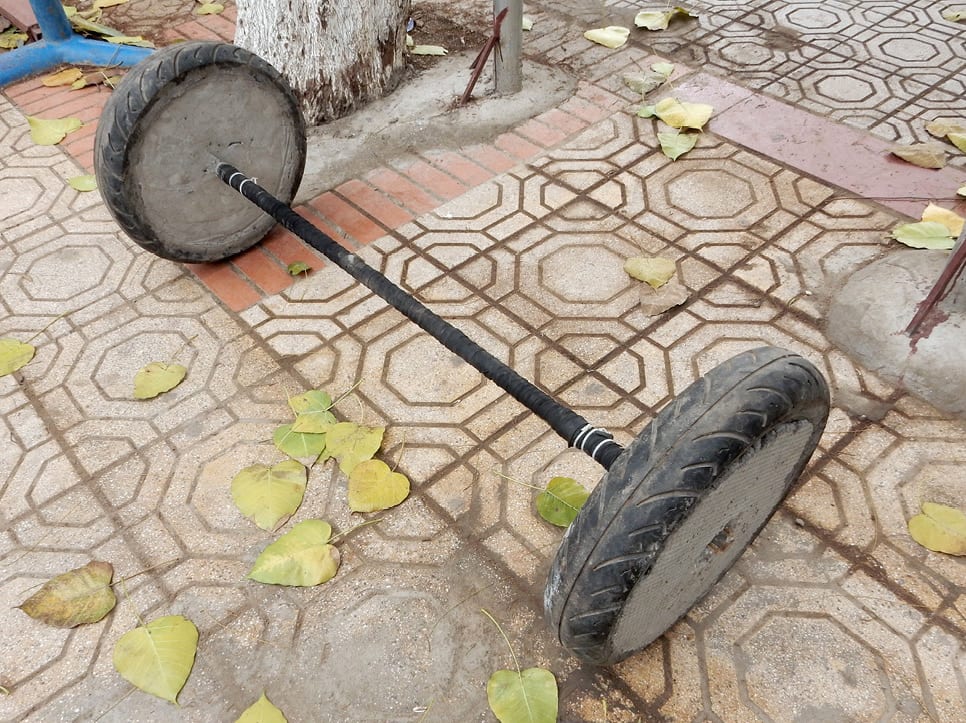 Hanoi is still a developing city but very rapidly becoming more modern with a better economy and larger middle class. It seems to have embraced a lot of new technologies, while still retaining many traditional elements, resulting in a very interesting mix of the old and the new.
Hanoi is still a developing city but very rapidly becoming more modern with a better economy and larger middle class. It seems to have embraced a lot of new technologies, while still retaining many traditional elements, resulting in a very interesting mix of the old and the new.
Everyone has smart phones, gaming lounges lined with high definition monitors are popular, many buildings and scooters seem very new, and drivers use apps like Grab to coordinate rides. A couple larger freeways are currently under construction and there’s no problem getting fast wifi throughout the city. At the same time, you’ll find ancient temples and many much older buildings still in use, and see many traditional activities such as men smoking tobacco from long bamboo pipes in the streets, vendors carrying goods in baskets hanging off poles balanced over their shoulders, and women washing dishes in large basins outside.
Many aspects of Hanoi have a certain makeshift improvised quality. Whatever people can’t afford to purchase or acquire as commercial equipment, they’ll simply create with resourcefulness and ingenuity from the materials they have.
People who have left then returned to Hanoi a couple years later say that they’re surprised by how much the city has changed and developed in their short time away. I feel like if I returned in 3, 5 or 10 years, the version of Hanoi I saw today would already have changed significantly.
Hanoi
 Hanoi doesn’t have regular larger grocery stores. Instead, they have many tiny shops which specialize in different things, and street vendors for fruits/veggies/meats. Some vendors ride bicycles with large baskets strapped to the back and sides carrying goods, which makes them a little hard to find when you’re looking for a specific thing.
Hanoi doesn’t have regular larger grocery stores. Instead, they have many tiny shops which specialize in different things, and street vendors for fruits/veggies/meats. Some vendors ride bicycles with large baskets strapped to the back and sides carrying goods, which makes them a little hard to find when you’re looking for a specific thing.
Most shops are family owned, with the ground floor being the shop/restaurant and the family living upstairs. It’s not uncommon for extended family and a couple different generations to live together in one building/home. Many restaurants are very small, so set up with tiny plastic tables and stools on the sidewalk out front to accommodate additional customers. These makes you feel like a giant when eating!
Property costs (at least in ancient times) for homes/shops were based on the square footage of the front facade, rather than overall size of the house. For this reason many older buildings have a very narrow front faces which extends far back and many stories high. The overall architecture of the city feels very organic, as if buildings and additional stories were added as needed rather than planned out in advance, with very little space is wasted between buildings.
Once again, there were crazy wires everywhere – to a more dense and disorganized extreme than I’d previously seen elsewhere. I get the feeling there aren’t really any general safety standards here, or at least not any strongly enforced.
My Neighborhood
My studio (an AirBnB rental) was located in a very local part of town outside of the touristic area, about 20 minutes south of the main city center by taxi. I lived in the middle of a large, dense block of narrow residential buildings many stories high. The area around my place was a labyrinth of tiny alleys just large enough for pedestrians, bikes and scooters to pass through, but not large enough for cars. The closely sandwiched buildings didn’t offer much of a view from my 3rd story window or let in much natural light, giving the space inside the ambiance of perpetual dusk at all times of day. Most morning around sunrise, you could hear a rooster crowing outside. Some evenings, you could hear the soft melody of a flute being played from one of the neighboring buildings.
The area which I was staying in was not at all a tourist part of town. I was almost the only Westerner/foreigner staying here, which got me more than a few curious looks from the local people in the neighborhood. Which I can understand completely. Sometime towards the end of my stay, I did cross another Westerner in the neighborhood. I’d become accustomed to seeing only local people at that point and was so surprised to see him that even I caught myself staring, wondering what he was possibly doing in the neighborhood!
There was diamond shaped lake close to my block surrounded by many cafes and restaurants, with a park/walkway along three sides including benches, an assortment of outdoor fitness equipment, and a playground for the kids. It was a popular place to hang out for people in the community, especially in the evenings. Here, vendors would set up small food stalls with tiny plastic tables and chairs for their customers, groups of friends would sit around drinking tea and eating sunflowers seeds, families would bring their children to play, men would sit around fishing, groups would play music and practice classical dances in pairs, fitness enthusiasts work out on the outdoor equipment, and all the cafes along the waterfront would be filled with customers. It was a very comfortable and family friendly ambiance!
Not for Everyone
Hanoi is not for everyone. If you want to vacation in a place with more Western standards, with English spoken everywhere, pristine streets, large all-in-one grocery stores, orderly traffic regulation, good public transportation, and spacious uncluttered sidewalks – in all honesty, you’d probably be better off going elsewhere. While there are certainly very beautiful areas and many higher end hotel rentals available in Hanoi (for amazing rates!) – most of the city isn’t like that. While it’s not always beautiful, it certainly is lively and interesting, with tons of history/culture, and no shortage of things to see and do!
Safety
I’ve heard it said before by people who travel that they often feel much safer in South East Asia than in US, and I’d completely agree with that sentiment. At no point did I feel even remotely unsafe, even when in much lower-income areas, even living in a neighborhood made up of tiny dark alleys and sometimes returning home solo late at night.
Needless Apprehensions
Vietnam was one of the places I was most excited to see in person, but also one of the ones that I felt the most apprehensive about. Reviews online seemed rather polarized – people either loved it or hate it, with nothing in between. I wondered which would be the case for me.
My concerns fell into three main categories. First, that I would have a really hard time getting around due to language barrier and lack of infrastructure such as public transportation. Second, that I would have something important stolen. According to the online reviews, petty theft such as purse snatching was rampant. Third, that something I would eat would make me terribly sick.
None of these turned out to be valid concerns. It is true that there was certainly much less English spoken, and at much lower level of fluency than many other countries I’d previously been to. But with the help of Google Translate, body language, little bits of English – I had no problem communicating. I used general caution and was aware of surroundings/belongings in tourist areas, so had no issues with theft. Lastly, despite eating a huge variety of foods from many different places and street vendors including ice cream and ice cubes – nothing I ate gave me any digestive problems.
I think perhaps the internet has a tendency to vastly exaggerate the dangers of things.
Visas
Entering Vietnam was a pretty straightforward and simple process. I applied for an e-visa online in advance through the National Web Portal on Immigration, paid a small processing fee (about $26), and after a couple days received a letter of approval to print to present upon arrival. The online application asks for fairly standard information such as passport info, photo, birthday, home address, entry/exit dates and port of entry.
I’d read online that a passport sized photo was needed as well upon arrival at the airport so had these ready to present, but no one actually asked for this. With all my documents in order and ready to present, passing through immigration didn’t take more than a couple minutes. I was not asked for proof of an outbound ticket, or for any details as to where I’d be staying for the month.
Money
 The exchange in Vietnam is quite extreme: $1 United States dollar (USD) = ₫23,000 Vietnamese dongs (VND). It’s a little confusing at first, but not too bad if you just memorize a few benchmark values to have some general idea of what things cost when out and about. Vietnam operates largely on a cash economy, so it’s best to withdraw some cash in advance and not rely on vendors having credit or debit card machines for most transactions. Vietnamese currency has no coins but rather is made up entirely of paper bills. American dollars are widely accepted here too, though you might not always get the best exchange rate and will often receive the change in dongs.
The exchange in Vietnam is quite extreme: $1 United States dollar (USD) = ₫23,000 Vietnamese dongs (VND). It’s a little confusing at first, but not too bad if you just memorize a few benchmark values to have some general idea of what things cost when out and about. Vietnam operates largely on a cash economy, so it’s best to withdraw some cash in advance and not rely on vendors having credit or debit card machines for most transactions. Vietnamese currency has no coins but rather is made up entirely of paper bills. American dollars are widely accepted here too, though you might not always get the best exchange rate and will often receive the change in dongs.
Everything in Vietnam is VERY affordable compared to US standards! Lodging and tours are very reasonably priced, a full plate of food (often including tea and soup) typically costs $1.25-$2, and Grab taxi rides (the Asian version of Uber) throughout most of the city are under $5 (even less if you’re brave enough to ride a scooter taxi!).
Language
The modern Vietnamese writing system (called Quoc-ngu) uses a Roman alphabet with some additional digraphs and accents. It was created by a Portuguese missionary then further developed and made mandatory by French colonists during a time of cultural imperialism. Prior that, an alphabet of modified Chinese characters was used for writing.
In this written system, the are no multi-syllable words. Every word is equal to only one syllable. Words can be written one after the other to act like what would be multi-syllable words in English. Some words have no meaning on their own, and need to be strung together with other words to acquire meaning.
Food
The food in Vietnam was AMAZING – consistently delicious, healthy, and made with local, fresh ingredients. Many really great restaurants here have very underwhelming facades. You’d never suspect such amazing food could be found down these tiny allies and inside hole-in-wall shops!
Meals in Vietnam are often served in a way that lets the customer personalize them to taste. Dishes of noodle soup often come with a plate of mixed herbs, greens, and soy bean sprouts on the side which you can add, along with many optional sauces. Meals are eaten with chopsticks and a shallow soup spoon.
A small glass of cold tea is often complimentary with the meal. Fruits are eaten after meals to refresh your mouth and clear the taste of the meal. What we would consider desserts are actually eaten between meals as snacks.
Two of my favorite snack were popped grains and sweet soup. Popped grains were sold by street vendors on bikes in the streets, and consisted of blocks of popped grains coated with sugar, a bit like caramel popcorn. Sweet soup is a milky dessert with custard, jello blocks (but of a different consistency than the American kind) and other flavors (like berries or syrups) mixed into thick milk, served with crushed ice on the side. You can add however much ice you’d like to your bowl to dilute the sweetness and flavor intensity to taste.
Vietnam also has a huge selection of delicious milk teas and plant-based milk drinks such as corn milk, soy milk, coconut milk, sesame milk, and walnut milk… just to name a few. These are usually pretty sweet. I tried as many different kinds as I could and loved them all!
Having now eaten actual pho, I can say that many of the Vietnamese restaurants in USA actually do a pretty accurate job of reproducing this meal… for about 6x the cost of what you can purchase it for here!
Great (Vegetarian!) Food
Tinh Tam’s (near my home) quickly became my favorite local restaurant in the area. I ate here almost every day – sometimes even twice a day! The ambiance was cozy and calm, with friendly staff, quick service, and amazing food. Most meals were either noodle soup, a ball of rice surrounded by different assortment of raw and cooked veggies, or a plate of noodles and veggies. I didn’t realize until the last day of my stay that it was actually a completely vegetarian restaurant.
Coffee
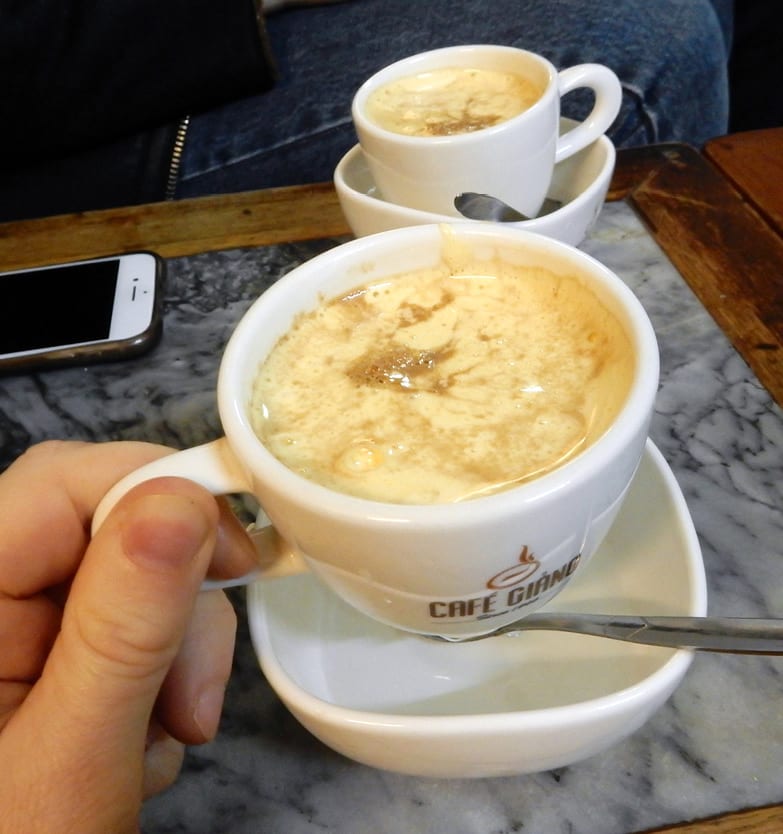 Egg coffee is a specialty of Hanoi. It’s made of egg yolk mixed with condensed milk and sugar, beaten and boiled into a very thick cream which is then poured over a shot of super strong black coffee. Very delicious! Not all cafes serve this though. Regular coffee in Hanoi consists of a small, super strong, super dark shot of coffee served with sweet condensed milk and liquid sugar on the side.
Egg coffee is a specialty of Hanoi. It’s made of egg yolk mixed with condensed milk and sugar, beaten and boiled into a very thick cream which is then poured over a shot of super strong black coffee. Very delicious! Not all cafes serve this though. Regular coffee in Hanoi consists of a small, super strong, super dark shot of coffee served with sweet condensed milk and liquid sugar on the side.
Pollution
The pollution in Hanoi for the month that I was here ranged from “moderately bad” to “unhealthy”. I downloaded an app on my phone which I’d check throughout the day, and wore a cloth air mask anytime the air quality dipped into the “unhealthy” range. On the worst days, the pollution could be seen as a brown haze over the city, obscuring the buildings on the far side of the little lake in my neighborhood, and the air felt thick to breath.
Public Transportation
For all practical purposes – there is none. Ride sharing services such as Grab (the Asian equivalent of Uber) are immensely popular here and very cheap. You can use Grab to arrange for either a scooter or car taxi. The scooter taxis always provide an extra helmet for their passengers.
Scooters
Hanoi takes all aspects of scooter driving to a new level. Compared to other South East Asian cities I’ve traveled to there’s denser traffic, faster driving, more weaving amongst other vehicles, less strongly enforced traffic laws, and less clearly marked intersections and lane divisions. The direction of roundabouts seems to be somewhat optional – while about 80% of people go the uniform, correct direction – it’s also totally fine to just drive the other way if it’s shorter, apparently!
In the center of the city, there’s many more scooters than cars on the roadways. And, for good reason – it really is the perfect vehicle for commuting around Hanoi! For starters, scooters are much more affordable than cars. This is partly because scooters are made in Vietnam, whereas cars are imported and heavily taxed. It cost about $1000 USD to purchase scooter, which is 3 months salary for average person here. It’s also much cheaper to purchase fuel for a scooter than a car. In addition, driving Hanoi is much easier on a scooter because of the small streets and dense traffic. There are many tiny alleys a scooter can pass through which a car would not fit into.
You might think that it would be inconvenient at times to have a scooter when needing to transport people or larger items. Not so! I’ve seen a truly amazing amount of large items strapped to a scooter, proving that you really don’t need a car for this. Scooters can easily comfortably accommodate 1-2 passengers, and sometimes up to 4 if stacked together well!
There’s constant honking in Hanoi. It isn’t rude, but rather more of a “watch out” notification used whenever drivers are coming around a corner, getting close to another person/driver, about to merge, about to do something unexpected etc… basically any situation where another person might not be aware of them.
I once took a scooter taxi in Hanoi morning rush hour traffic. It was the most insane driving experience I’ve ever been through! It included weaving through dense sea of scooters (and few larger vehicles), the equivalent of 5 lanes of traffic (one way) with no lane divisions, lots of honking (of course), driving onto the sidewalks, and going the WRONG way into oncoming traffic on few one way streets! The most amazing part was how normal this seemed for my driver and everyone around us.
Despite all of this, amazingly I didn’t see a single traffic accident in the entire month I was here! I think Vietnamese people might be best drivers in the world.
Crossing the Street
Crossing the streets was a little daunting at first. The majority of the time there are no crosswalks or traffic lights – you basically just have to take the initiative and literally walk into traffic. The proper way to cross a street in Vietnam is simply to walk calmly and with purpose into the street. Do not stop, speed up, or slow down. The oncoming traffic is a constant flow and doesn’t actually stop when pedestrians are crossing – vehicles just speed up, slow down or swerve to the side accordingly to avoid obstacles. Changing your pace will just make it harder for them to predict where to go. I definitely significantly improved my Vietnamese street crossing skills in the month I was here, but even toward the end was not brave enough to attempt to cross many of the larger, more busy streets this way!
Soccer
Vietnamese people love soccer. In the evenings when games were happening, all the outdoor bars would set up projectors for their customers and will tune in all televisions to watch the game game. Bursts of cheering or disappointed groans of dismay could be heard periodically every time one of the teams scored a point.
Religion
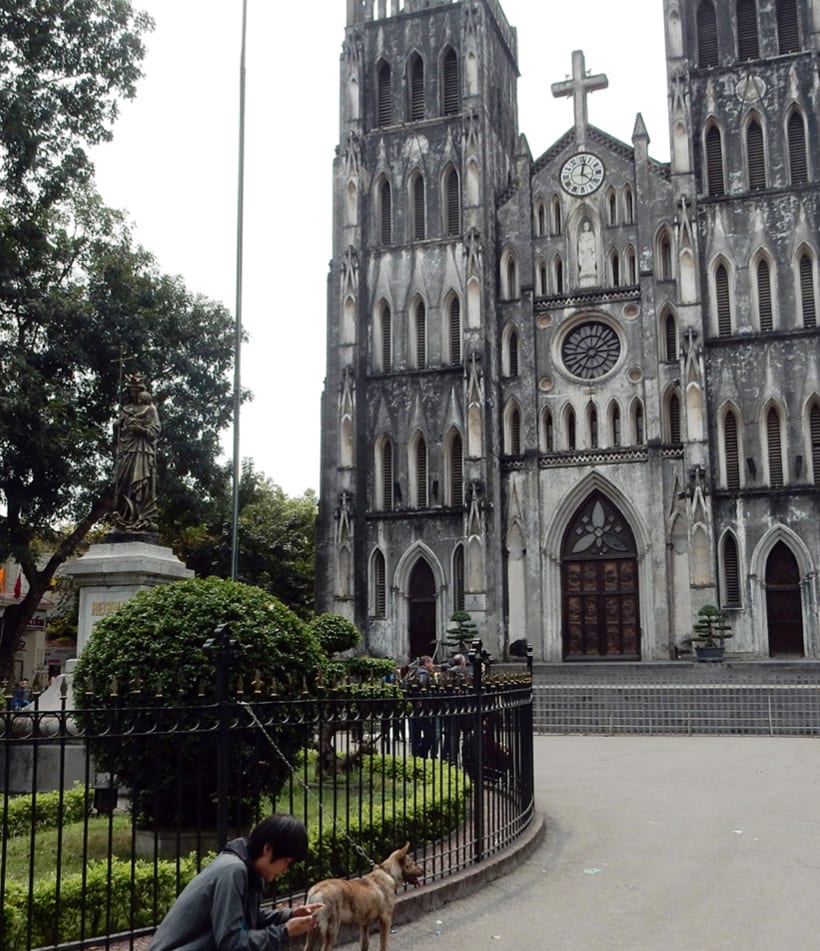 Hanoi has many beautiful and richly decorated temples throughout the city. Although Vietnam has no official religion, it still plays an important role in people’s lives. In Hanoi, the following five religions are common: Buddhism, Confucianism (although that’s more of a philosophy and social structure rather than religion), worshiping the mother goddess, worshiping ancestors, and Catholicism.
Hanoi has many beautiful and richly decorated temples throughout the city. Although Vietnam has no official religion, it still plays an important role in people’s lives. In Hanoi, the following five religions are common: Buddhism, Confucianism (although that’s more of a philosophy and social structure rather than religion), worshiping the mother goddess, worshiping ancestors, and Catholicism.
Confucianism was brought to Vietnam during Chinese occupation. It puts a strong emphasis on living virtuously, good behavior, obedience, loyalty, and education, but diminishes the role of women in society. In response and to balance this, a religion of worshiping the mother goddess was developed, paying tribute to the importance of women in society.
 Temples will often include a table for offerings in front of statues of important figures (Buddha, the mother goddess, past kings and important scholars, for example). Offerings almost always including fruit but also often including donations of money and other food items, sometimes even including beer!
Temples will often include a table for offerings in front of statues of important figures (Buddha, the mother goddess, past kings and important scholars, for example). Offerings almost always including fruit but also often including donations of money and other food items, sometimes even including beer!
Buddhism, Confucianism, worshiping the mother goddess and ancestor worship blend harmoniously together. It’s not uncommon to see a temple with elements of all of these together. A person can without conflict practice all, and can pay respects to different aspects of different religions. Catholicism, however, excludes all other religions.
Văn Miếu (Temple of Literature)
This site consists of a series of courtyards divided by beautiful gates, with a very ornate temple dedicated to Confucian sages and scholars at one end. In the past, students enrolled in the Imperial Academy lived and studied here. The fourth courtyard includes row upon row of turtle steles (big stone slabs on the back of giant stone turtles) engraved with the names of doctors who passed the royal exams. During the war, these were covered in sand as protection from aerial bombardment. This visit was a nice break from the hustle and bustle of the rest of the city.
Tours
I usually spend most of my travels exploring on my own, but since everything in Hanoi was so extremely affordable, I went ahead and treated myself to a few organized tours on a couple separate days.
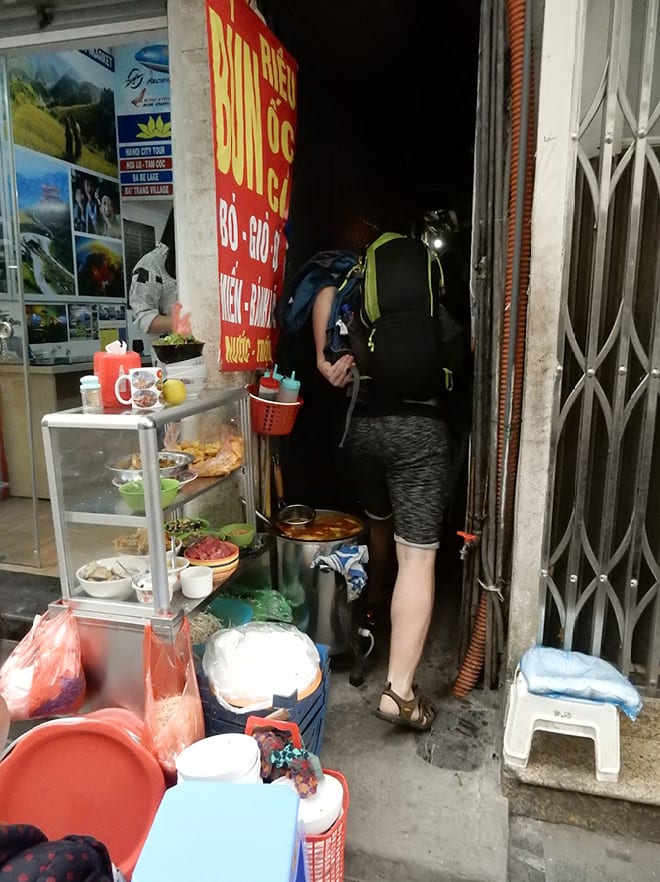 The first was a walking street food tour in Old Quarter, which included a big variety of tiny meals and drinks in a bunch of different restaurants. The guide was informative and charismatic, all the food was incredible! The biggest thing I learned here is that there are a ton of really amazing little restaurants hidden behind very unassuming facades, sometimes down tiny little alleys behind buildings which you wouldn’t even notice while passing by!
The first was a walking street food tour in Old Quarter, which included a big variety of tiny meals and drinks in a bunch of different restaurants. The guide was informative and charismatic, all the food was incredible! The biggest thing I learned here is that there are a ton of really amazing little restaurants hidden behind very unassuming facades, sometimes down tiny little alleys behind buildings which you wouldn’t even notice while passing by!
The second tour was an all day biking, boating, walking tour with Hanoi Explore Travel that covered a couple different areas to the south of the city.
First stop was Hoa Lu, ancient capital, to walk around in the temples area.
Next was biking through the nearby Ninh Binh province, an area with giant limestone hills covered with lush vegetation and surrounded by flat rice patties and slow small rivers and lakes.
Following that was small boat rowing tour along the lakes near Trang An wharf with more giant limestone cliffs on all sides. The boats went through many cave tunnels so low I could touch the ceiling, lit with little lamps along the way to avoid total darkness.
The tour’s last stop was Mua cave, which wasn’t actually a cave but a giant hill 500 steps high with breathtaking panoramic view from the top!
Training in Hanoi
BJJ is still a pretty new sport in Vietnam, with very few black belts in the country, but is gaining popularity and developing quickly. Hanoi has three gyms: BJJ Hanoi, Agoge and Ronin BJJ Hanoi.
I did have the opportunity to visit and train at all three during the time I was there, and enjoyed some great rolls at each! BJJ Hanoi was a short 10 minute walk from my studio, so became my “home gym” for the month in Hanoi. Both Agoge and Ronin are Globetrotter associated gyms but were located a bit further from my place, requiring a 30 min Grab taxi ride to get to, which unfortunately didn’t make them practical options for training on a regular basis.
BJJ Hanoi
BJJ Hanoi was actually the first BJJ club in Hanoi, founded in 2011. The gym was located on the second story of a large sporting facility building. There were often people practicing other martial arts in groups outside, playing table tennis, or lifting weights in other rooms of the building. The BJJ room was rather small for the number of students training regularly (about 20 per class) but had good quality mats and padded walls. There was no air conditioning but that wasn’t really a problem for the time of year I was there, with exception of a few hotter days.
Class most days was taught by purple belt coach Trần Tuấn Anh. The students consisted primarily of white belts, so many of the techniques we saw focused on the important fundamentals. The instruction was clear and detail-oriented, usually not given in English but my training partners were always happy to step in and translate. The students at the gym were very friendly, enjoyed having visiting travelers, and very passionate about BJJ – it was a pleasure to train here!
During the last week, two black belts traveling happen to be in town for vacation and stopped in to give class! The first was John Bernard Will from Australia with brown belt wife Melissa Will. The second was Louis Levy from US. Super nice instructors, greatly enjoyed their classes and learned some valuable details from both!

